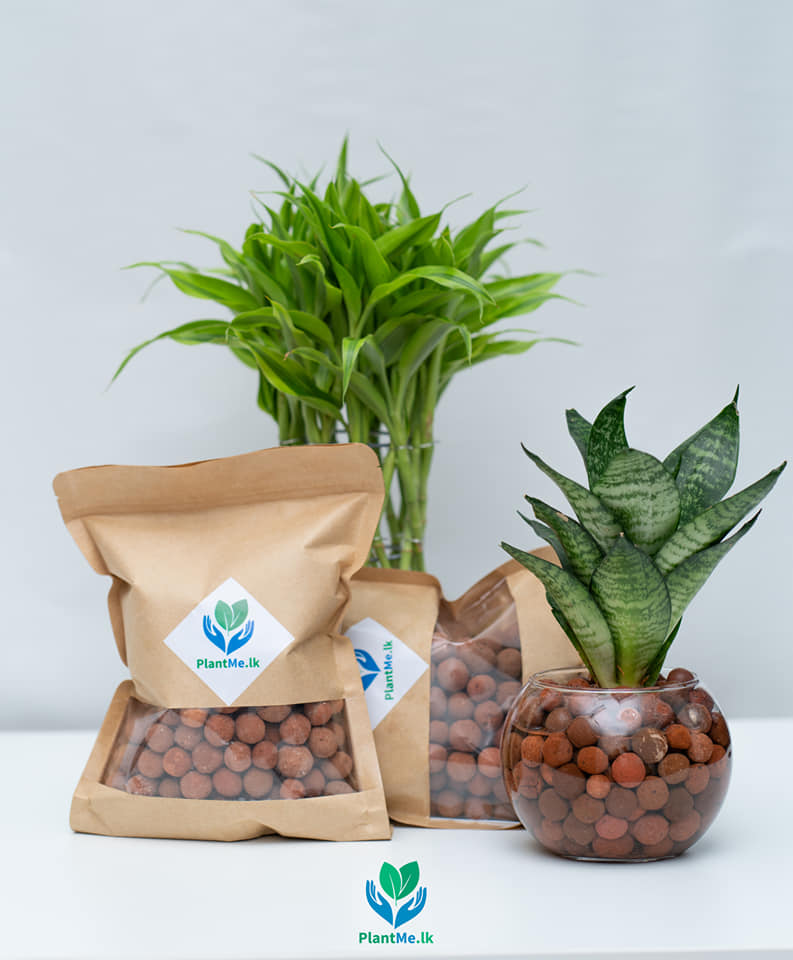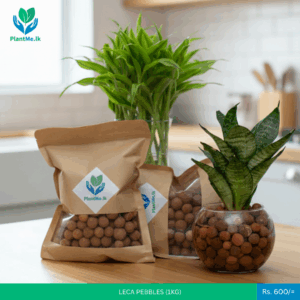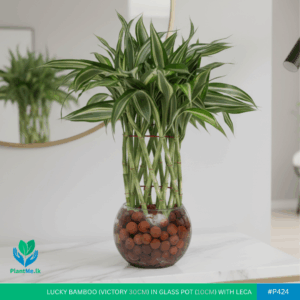Indoor Plants
How to Successfully Grow and Maintain Lucky Bamboo with LECA Balls.
Indoor plants can bring a touch of nature into your home, improving the air quality and adding a pop of color to your living space. They can help to purify the air by removing harmful toxins and pollutants, and they can also increase humidity levels, which can be beneficial for those who suffer from dry skin or respiratory issues.
One type of indoor plant that has gained popularity in recent years is the lucky bamboo plant. Lucky bamboo, also known as Dracaena sanderiana, is a type of tropical plant that is native to Africa and Asia. It is a low maintenance plant that is easy to care for and can thrive in a variety of environments, making it a great choice for those who are new to indoor gardening.
Lucky bamboo plants are known for their unique appearance, with slender stalks that are often twisted or braided together. They can be grown in water or soil, and come in a range of sizes and styles, from small tabletop plants to large floor plants.
In traditional Chinese culture, lucky bamboo is believed to bring good fortune and wealth to those who grow it. It is also associated with the element of wood, which is said to represent growth and renewal. As such, lucky bamboo plants are often given as gifts to celebrate special occasions, such as birthdays, weddings, and the Chinese New Year.
But despite their popularity and symbolism, many people are unsure of how to properly care for lucky bamboo plants. In this article, we will provide some tips on how to successfully grow and maintain your lucky bamboo plant, including the use of Leca balls, also known as hydroton or expanded clay pebbles.
One of the key elements to successfully growing lucky bamboo is the use of Leca balls. These pebbles are made from natural clay that has been fired at a high temperature, creating a lightweight and porous material.
Leca balls are an ideal growing medium for lucky bamboo plants because they provide good drainage and aeration, while also holding onto moisture. They are also pH neutral, which means they won’t alter the water chemistry and can be used with a wide range of plants.
To use Leca balls with your lucky bamboo plant, simply fill the bottom of the container with the pebbles and add water until it reaches the desired level. Place the lucky bamboo plant on top of the Leca balls, making sure the roots are covered.
It’s important to keep an eye on the water level and refill as needed, as lucky bamboo plants need consistent moisture to thrive. You should also change the water regularly, as it can become stagnant and start to grow bacteria or algae. A good rule of thumb is to change the water every one to two weeks, or whenever it starts to look cloudy or discolored.
You can also add liquid fertilizers to the water to provide additional nutrients for your plant. However, be sure to use a fertilizer specifically designed for aquatic plants, as regular plant fertilizers can be harmful to lucky bamboo.
In terms of lighting, lucky bamboo plants are adaptable and can grow in a range of lighting conditions. They can tolerate low light levels, but they will grow best in bright, indirect sunlight. Avoid placing your lucky bamboo plant in direct sunlight, as this can cause the leaves to yellow and the stalks to become weak and brittle.
Another important factor to consider when growing lucky bamboo is the temperature. These plants prefer warm temperatures, between 65 and 90 degrees Fahrenheit. They can tolerate a wide range of temperatures, but they will not do well in extreme cold or heat. If you live in a cold climate, it’s best to keep your lucky bamboo plant indoors during the winter months to protect it from freezing temperatures.
How to use LECA Pebbles for Indoor Plants? Step by Step Guide
- Choose the right plants: LECA pebbles work well for a wide variety of indoor plants, especially those that prefer well-draining soil. Succulents, cacti, tropical plants, and orchids are some examples.
- Prepare the container: Select a suitable container with drainage holes at the bottom. This allows excess water to flow out and prevents waterlogging. Clean the container thoroughly before use.
- Rinse the LECA pebbles: Rinse the LECA pebbles under running water to remove any dust or debris. This step ensures a clean and sterile environment for your plants.
- Add a layer of pebbles: Place a layer of LECA pebbles at the bottom of the container, covering about one-third of the height. This layer acts as a reservoir for excess water and helps in maintaining proper drainage.
- Place a barrier (optional): If desired, you can add a piece of landscape fabric or a fine mesh screen over the pebbles. This prevents the potting mix from settling into the pebbles but allows water to pass through.
- Pot your plant: Prepare a well-draining potting mix suitable for your plant’s needs. Gently remove the plant from its current pot and loosen the roots slightly. Place the plant on top of the LECA pebbles, making sure it sits at the desired height. Fill the remaining space with potting mix, pressing it gently around the roots.
- Watering: Once potted, water your plant thoroughly until water runs out of the drainage holes. The excess water will be collected by the pebbles, preventing the plant from sitting in water and reducing the risk of root rot.
- Maintain moisture levels: As you water your plant, the LECA pebbles will absorb some moisture and provide it to the plant’s roots when needed. Monitor the moisture levels and adjust your watering frequency accordingly.
- Fertilize as needed: LECA pebbles are an inert medium and do not provide nutrients to the plants. Therefore, regular fertilization is essential to ensure your plants receive the necessary nutrients for healthy growth. Follow the specific fertilizer recommendations for your plant species.
- Monitor plant health: Keep an eye on your plant’s overall health and adjust watering and care routines as needed. LECA pebbles facilitate better oxygen circulation to the roots, promoting healthy plant growth.
By following these steps, you can successfully use LECA pebbles for your indoor plants and enjoy the benefits of improved drainage and aeration. Remember to research the specific needs of your plants to provide them with the best care possible.
Purchase LECA Pebbles Today and Get Delivered to your Doorstep
-
Product on sale
 Premium LECA Pebbles / LECA BallsPrice range: Rs. 600.00 through Rs. 10,000.00
Premium LECA Pebbles / LECA BallsPrice range: Rs. 600.00 through Rs. 10,000.00 -
Product on sale
 Lucky Bamboo Victory in Glass Pot with LECA Balls | #P-424Original price was: Rs. 3,500.00.Rs. 2,800.00Current price is: Rs. 2,800.00.
Lucky Bamboo Victory in Glass Pot with LECA Balls | #P-424Original price was: Rs. 3,500.00.Rs. 2,800.00Current price is: Rs. 2,800.00.



